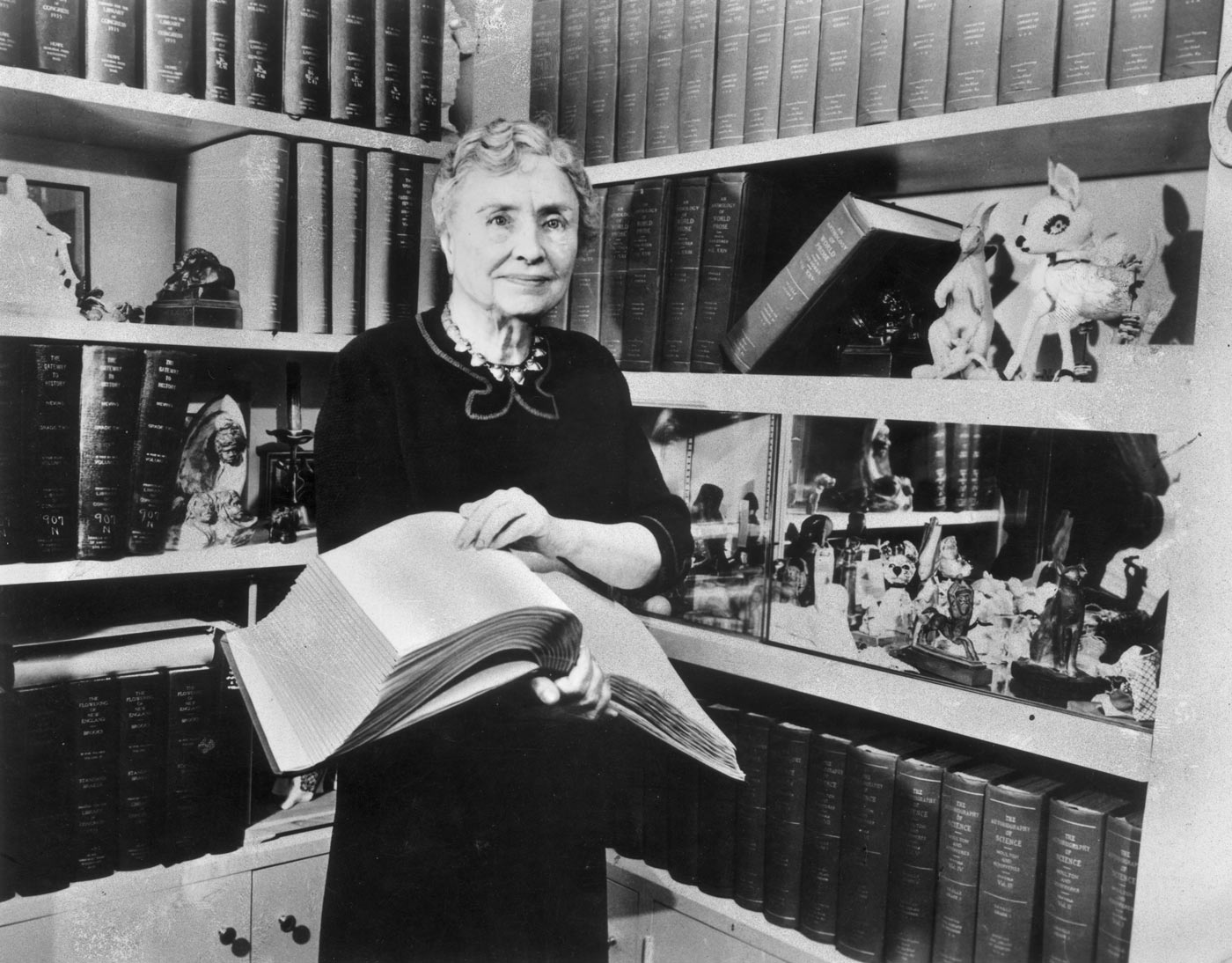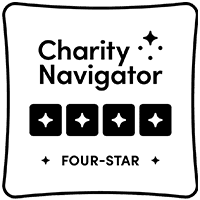Our History

Our History
Helen Keller Intl was co-founded in 1915 by two extraordinary individuals, Helen Keller and George Kessler, to assist soldiers blinded during their service in World War I. Kessler was a wealthy New York merchant who survived the sinking of the Lusitania in 1915 and vowed, as his lifeboat repeatedly capsized, to help those less fortunate in the world if he survived.
While recovering in London, he resolved to devote his remaining years to helping soldiers blinded in combat. In November 1915, George and his wife, Cora Parsons Kessler, founded the organization and asked Helen Keller, then 35 years old, for her support. She enthusiastically agreed.
The welfare of each is bound up in the welfare of all.
Helen Keller
Since then, we have committed ourselves to continuing Helen’s work. And that work has evolved. Guided by her fierce optimism, we have been working on the front lines of health for more than 100 years. Our programs prioritize preventing and treating vision loss and blindness—as well as addressing major global health problems such as malnutrition and neglected diseases that threaten sight, productivity, and well-being.
In Africa, Asia, Europe, and the US, Helen Keller Intl’s proven, science-based programs empower people to create opportunities in their own lives and build lasting change. Working in 20 countries, we help 73 million children and family members realize their true potential.
As we look ahead to new opportunities and challenges related to our mission, one thing remains constant – Helen’s fierce optimism and belief in human potential are at the heart of everything we do.
Milestones from 100 Years of Service to Humanity
Here are just a few milestones from our more than 100-year history of empowering vulnerable people to reach their full potential.
1915–1920
George Kessler survived the sinking of the Lusitania in 1915 and vowed, as his lifeboat repeatedly capsized, to help those less fortunate in the world if he survived. While recovering in London, he resolved to devote his remaining years to helping soldiers blinded in combat.
In November 1915, George and his wife, Cora Parsons Kessler, formally organize the British, French, and Belgian Permanent Blind Relief War Fund in Paris with George Raverat as head of European operations. The Kesslers ask Helen Keller, then 35 years old, for her support. She enthusiastically agrees, and the Permanent Blind Relief War Fund for Soldiers & Sailors of the Allies is incorporated in New York State in 1919.
The Fund opens a school and workshop for the blind in Belgium; schools in France teach blind veterans how to make chairs and brushes, and how to knit. Helen Keller becomes a cofounder, lifelong supporter, and ambassador.
1920–1930
George Kessler dies in 1920 and New York lawyer William Nelson Cromwell, co-founder of Sullivan & Cromwell, an international law firm headquartered in New York, succeeds him. Under his long-time leadership, the organization develops a press that prints books and music in Braille.
In 1925, the Permanent Blind Relief War Fund expands its focus beyond a purely war relief effort to one of aid and comfort to the civilian blind worldwide and changes its name to the American Braille Press for War and Civilian Blind. The press publishes books with a total of five million pages of Braille writing, five periodicals and various pieces of music.
The output is distributed to libraries in Belgium, France, England, Italy, New Zealand, South Africa, the United States, and Yugoslavia. The knowledge, information and entertainment furnished through the books and periodicals help widen the scope of activities and opportunities available to blind people.
1930–1940
The Press issues the first “talking book” in 1937 and makes plans to aid soldiers who would inevitably be blinded in World War II.
1940–1950
At the start of World War II, the Press draws on its experience with World War I veterans to prepare for aiding the war blind again. After World War II, the Press affiliates with the American Foundation for the Blind. To reflect that close association, it changes its name to the American Foundation for the Overseas Blind (AFOB) and expands its mission to include rehabilitation.
In 1946, Helen Keller makes the first of many trips under the auspices of the Foundation to investigate the conditions and needs of blind people in all parts of the world. She notes, “I was prepared for the tragedy but not for its extent or complexity…they do not want charity, they want the kind of help that will give their lives a goal, their frustrated selves a purpose around which to integrate their personalities and regain their inner health.”
In 1949, AFOB spearheads an International Conference of Workers for the Blind, attended by representatives of the United Nations and UNESCO; landmark resolutions pass that stress the need to give blind people the physical, psychological and technical means to take their place in society, with a particular emphasis on education.
1950–1960
AFOB is working on four continents—Africa, Asia, Europe and South America and has programs in China, Iran, Israel and Rhodesia (now Zimbabwe). In May 1959, the Foundation initiates the Helen Keller Crusade for the Blind, named to honor the leadership and inspiration she had given for so many years. The purpose of the Crusade is to expand public awareness of and support of the Foundation’s programs. Given that Helen Keller is approaching 80 years old, she looks to the Crusade to carry on and expand her work overseas and to maintain the hope inspired in the countries she had visited.
1960–1970
The Spirit of Helen Keller Award is established in 1959, during Helen Keller’s lifetime. The award commemorates her unique legacy and expresses appreciation for her role as a founder, trustee and staff member of Helen Keller Intl. The first awardee is Colonel Edward A. Baker, one of the chief organizers of the Canadian National Institute for the Blind.
In 1966, at the First African Conference on Work for the Blind, discussions are held about taking steps to prevent blindness while continuing to help those already afflicted. Research intensifies on four primary causes of blindness: trachoma, onchocerciasis, cataracts and nutritional blindness. It is a turning point for AFOB as it begins to shift its efforts toward blindness prevention and treatment and starts distributing vitamin A capsules in Asia-Pacific and Central America to combat blindness caused by malnutrition.
1970–1980
Dr. Alfred Sommer of the Johns Hopkins Bloomberg School of Public Health conducts groundbreaking studies in collaboration with AFOB on vitamin A deficiency (VAD), proving for the first time that controlling VAD decreases the risk of childhood mortality by as much as 34 percent, in addition to preventing blindness.
Realizing that small expenditures can bring life-altering results, AFOB begins distributing vitamin A capsules on a massive scale to combat nutritional blindness. Onchocerciasis control programs begin in Africa. In 1977, the organization adopts the name of Helen Keller Intl to recognize the contributions of Helen Keller in helping not only the blind, but also those who are vulnerable or disadvantaged.
1980–1990
Tens of millions of children worldwide receive vitamin A capsules through Helen Keller Intl’s efforts, and the rate of childhood blindness around the world begins to fall dramatically. Helen Keller Intl and partners help develop the SAFE strategy for trachoma control. A new drug, Mectizan® (ivermectin), developed by Merck & Co., Inc., proves effective for onchocerciasis prevention and control; Helen Keller Intl launches programs to distribute the drug to vulnerable communities in Africa and Asia-Pacific.
1990–2000
Helen Keller Intl establishes cataract treatment programs in 13 countries. Homestead Food Production begins in Bangladesh. Helen Keller Intl begins promoting orange-fleshed sweet potatoes to enrich diets in Niger. The first Helen Keller Intl domestic program begins in the United States “to bring education into focus” for underserved school children. Helen Keller Intl joins VISION 2020: The Right to Sight, a global initiative to eliminate avoidable blindness by 2020.
2000–2010
Our offices in New York City are destroyed during the 9/11 terrorist attacks on the World Trade Center; no employees are injured, although Helen Keller’s archives are lost.
Helen Keller Intl begins its leadership role in West Africa to promote food fortification. After the 2004 tsunami, we distribute multi-micronutrient Sprinkles® as part of the large-scale relief efforts. We also introduce programs that address the nutritional needs of people living with HIV/AIDS. The 250 millionth dose of Mectizan® (ivermectin) is distributed in Tanzania, while our US vision program provides its one millionth vision screening in the United States.
The Helen Keller Visionary Award and Helen Keller Legacy Award are established in 2005 to recognize institutional friends whose generosity and innovations advance our mission and recognize the significant on-going support of an institution for the work of Helen Keller Intl, respectively. In 2006, H.J. Heinz Company and William R. Johnson, Chairman, President and CEO, receive the first Helen Keller Visionary Award and Sullivan & Cromwell LLP receives the first Helen Keller Legacy Award, which is accepted by H. Rodgin Cohen, Chairman and Partner.
The Helen Keller Humanitarian Award is established in 2007 to recognize the significant support of individuals or institutions for their sustained humanitarian efforts around the world and Merck & Co., Inc. and Richard T. Clark, Chairman, President and CEO receive the first award in 2008.
In 2009, Helen Keller Intl receives the Champalimaud Award for its blindness prevention work in developing countries That year, Consumer’s Digest also lists the organization as one of America’s Top Charities for our spending efficiency (the amount a charity spends on its mission compared with total expenses) and cost-effective fundraising.
2010–2019
In 2011, Helen Keller Intl is included in Pulitzer prize-winning New York Times columnist Nicholas Kristof’s “Gifts That Say You Care” holiday giving column, with the endorsement that, “Helen Keller Intl gets more bang for the buck than almost any group I can think of.” In 2014, Helen Keller Intl becomes the tenth recipient of the Henry R. Kravis Prize in Leadership in recognition of our worldwide fight against blindness and malnutrition, with then President and CEO Kathy Spahn accepting the award for the organization. Also in 2014, Nicholas Kristof and Sheryl WuDunn feature the work of Helen Keller Intl in their book A Path Appears: Transforming Lives, Creating Opportunities.
Helen Keller Intl Awards
Every year, Helen Keller Intl commemorates Helen Keller’s achievements and legacy by recognizing exemplary individuals and institutions that advance her work through their humanitarian efforts.
See a full list of award recipients from 1960-2019.



